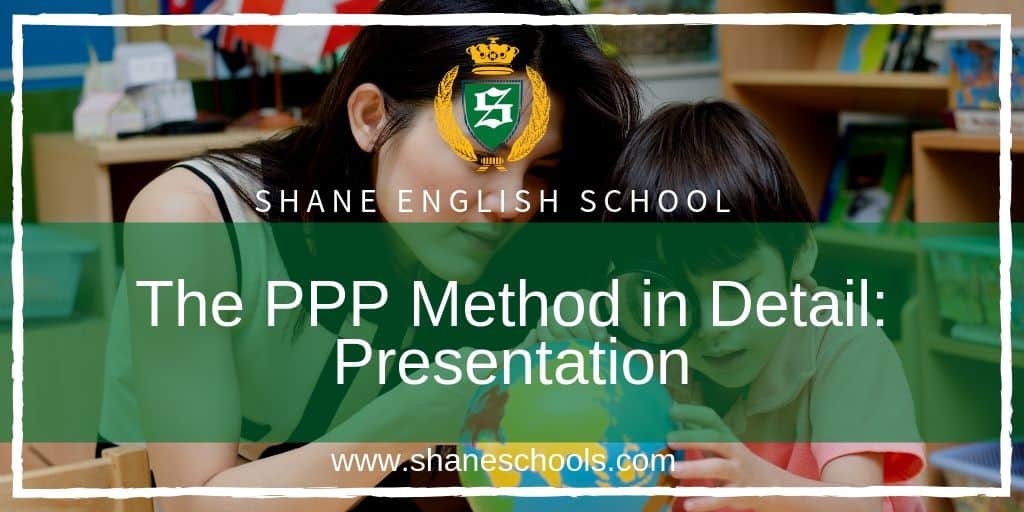At Shane English Schools, we use the Present-Practice-Produce method (PPP method) of teaching. The following are some things to remember when presenting language and grammar to young learners.
Not familiar with this method? Click here for an overview of the PPP method of teaching English.
Duration
Young learners have very short attention spans. They will not sit still for 15 minutes listening to you explain grammar. Your presentation stage should be 5 minutes long, maximum. You can cut down the length of your presentations by…
Creating a clear visual context
Use simple pictures to present the meaning of words and grammar. For vocabulary this can be as simple as using flashcards. For grammar, try to think of a one shot picture that can represent the meaning and context of a piece of grammar, e.g. if you are teaching “What would you like?” “I would like some pork, please.” you can draw a picture of a man sat at a table, with a waiter stood next to him. Present the vocabulary using the flashcards, and then use the drawing to present the grammar and show when we use this language, who says the language, the politeness level of the language etc. Adding another person sat at the table can then show “He would like…” etc.
Oral presentation first, written second
In the PPP method, never present grammar by just writing the language on the board. Words hold no meaning until you give them meaning. Present grammar orally first, using a clear, visual context. After you have presented in this way, only then write the full form on the board for the students to see. In this way you have given the words meaning first, and will allow the students to make connections between what they have heard and seen. The written form should be erased slowly through the practice stage.
Clear modeling
Don’t mumble your way through a presentation, either in the PPP method or anywhere else, and be careful of how much you talk. Say only what needs saying. When it comes to the target language, model it how you want the students to say it, not necessarily how you would usually say it. As native speakers we are used to running sounds together, speaking fast, using colloquialisms etc, but when we model to children we need to be clear, slow and accurate.
Use CCQs
Never, ever, ever, under any circumstances, at any stage of a lesson (but especially in the presentation stage) ask a student “Do you understand?” You need to check that they understand, using Concept Checking Questions (CCQs). CCQs should be framed as a yes / no question, or as a closed question with two options. For example, when teaching “Could I have some beef, please?” you could ask “Does he want to eat beef?” or “What does he want to eat, beef or pork?” For the response “Yes, of course” you could ask “Can he have beef?” or “Will the waiter bring him beef?” CCQs should not use the language being taught, and should be of a lower level than the language currently being checked.
A version of this article originally appeared in Shane English School’s Teaching English to Young Learners (TEYL) program, which is part of new teachers’ orientation.

We're hiring!
With schools around the world, Shane English School always has exciting new opportunities to offer.


